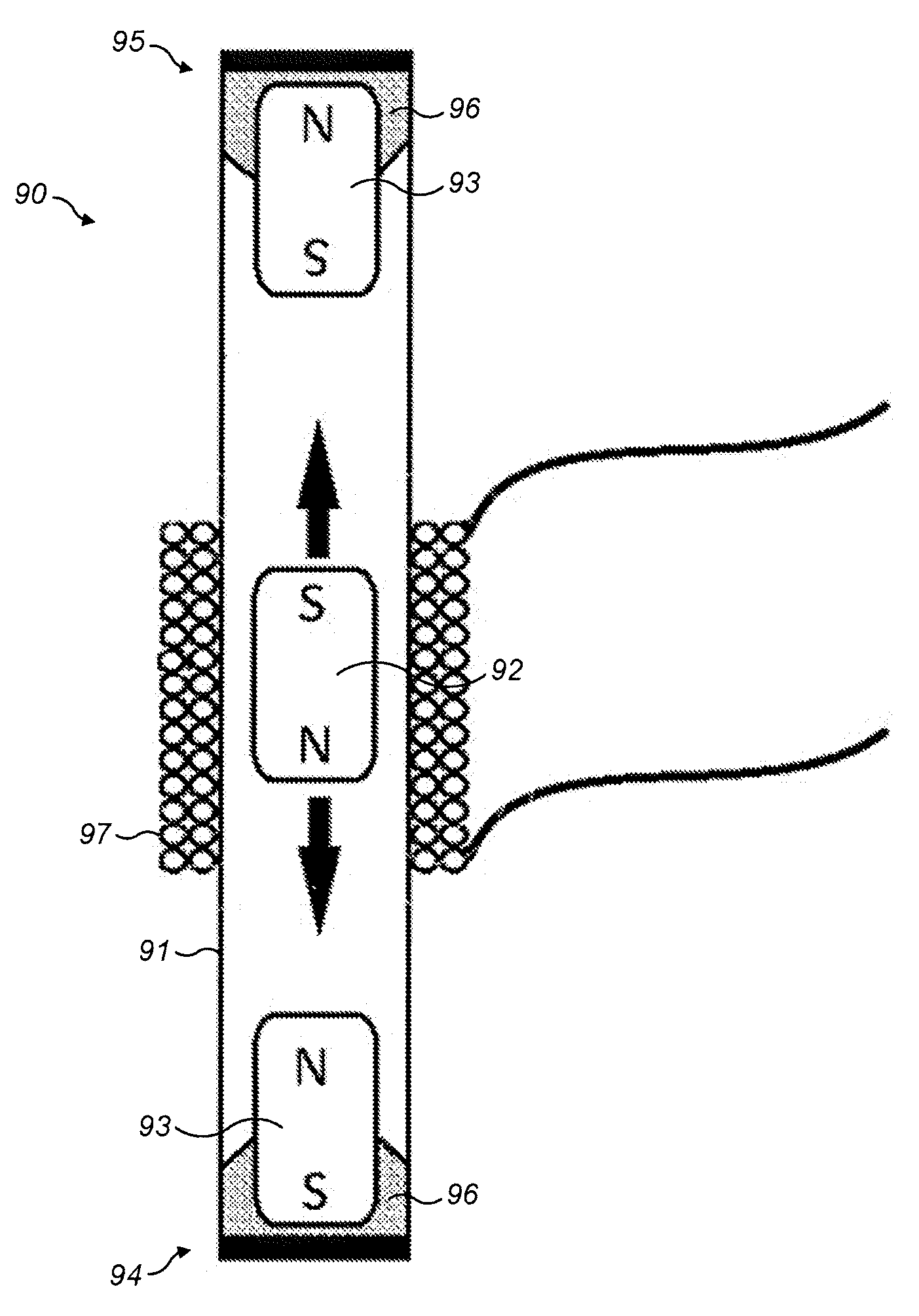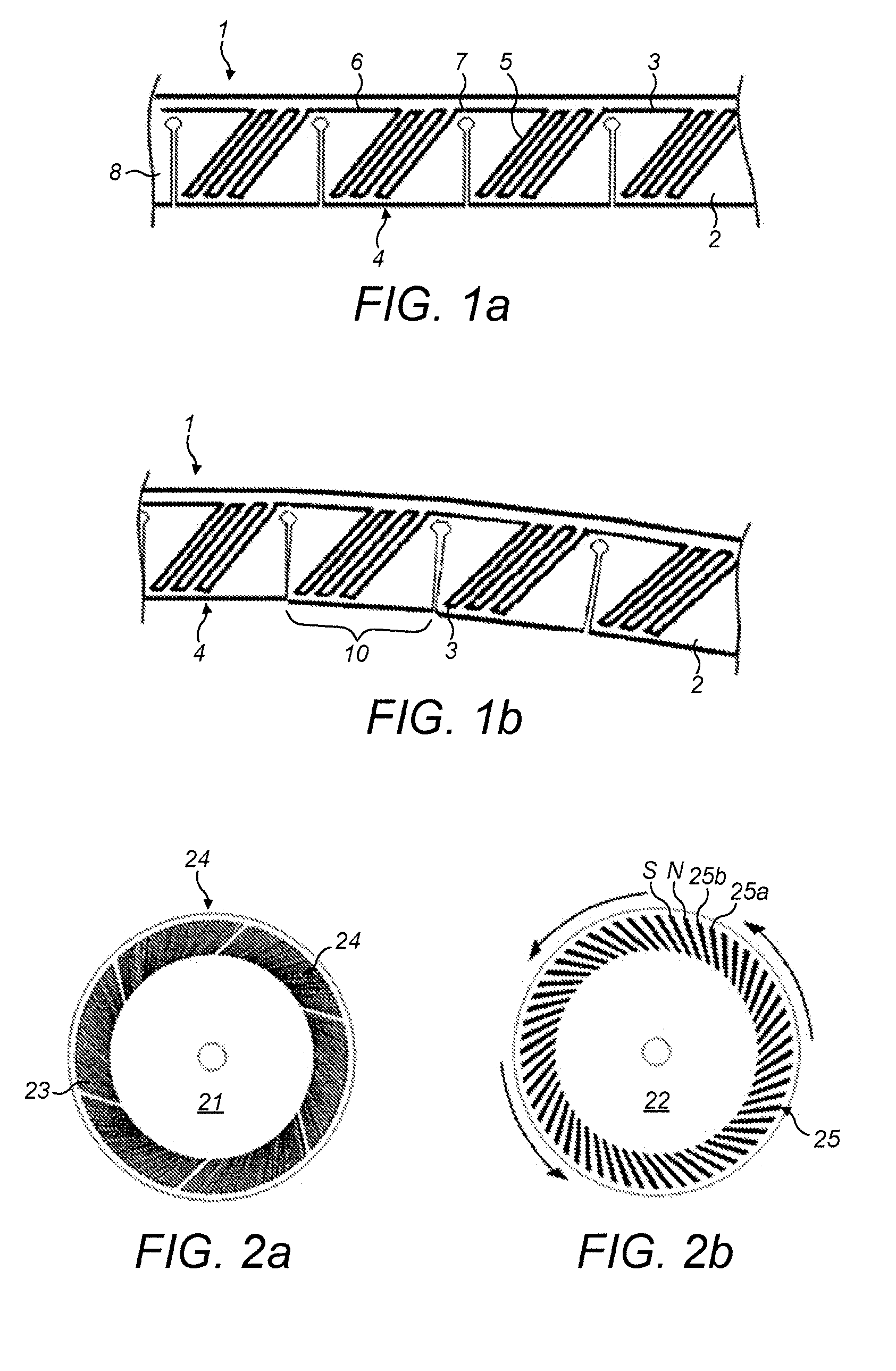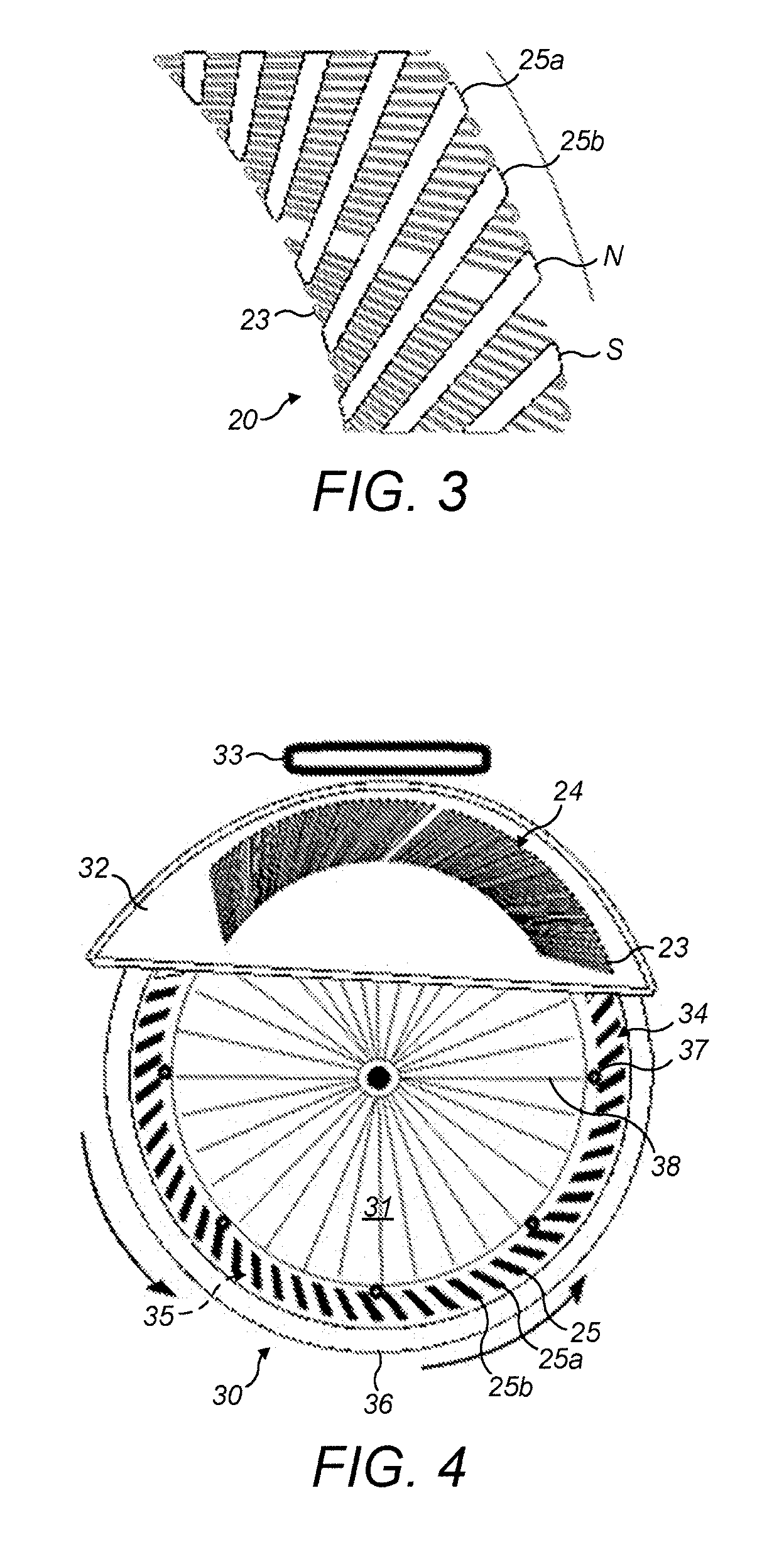Improvements in or Relating to Generating Your Own Power
a technology of generating coils and laminates, which is applied in the direction of magnetic circuit rotating parts, magnetic circuit shapes/forms/construction, gymnastics exercise, etc., can solve the problems of reducing power consumption, reducing power consumption, and reducing power consumption, so as to improve the efficiency of generating power and reduce the cost. , the effect of reducing the number of users
- Summary
- Abstract
- Description
- Claims
- Application Information
AI Technical Summary
Benefits of technology
Problems solved by technology
Method used
Image
Examples
Embodiment Construction
[0088]A preferred embodiment of the present invention will now be described.
[0089]FIGS. 1a and 1b show a printed coil laminate, identified in general by reference 1. The laminate 1 includes a flexible backing 2 and a conductor 3. The flexible backing 2 is an insulating material, in this example KAPTON®—which is one example of a polyimide film commercially available and, of course, one could use a different insulating material. The conductor 3 is an ink which has been printed onto the flexible backing 2. The ink is a compound including copper which makes the ink both conductive and somewhat flexible. If additional flexibility is required, then the ink could also include beryllium. The ink has nominal thickness and a weight of approximately 310 g / m2 (2 oz / ft2). The conductor 3 is formed into a coil 4 through provision of a plurality of parallel conductive tracks 5 (of conductive ink). Each coil 4 is connected to a preceding coil 4 by a connector 6 and a succeeding coil 4 by a connecto...
PUM
 Login to View More
Login to View More Abstract
Description
Claims
Application Information
 Login to View More
Login to View More - R&D
- Intellectual Property
- Life Sciences
- Materials
- Tech Scout
- Unparalleled Data Quality
- Higher Quality Content
- 60% Fewer Hallucinations
Browse by: Latest US Patents, China's latest patents, Technical Efficacy Thesaurus, Application Domain, Technology Topic, Popular Technical Reports.
© 2025 PatSnap. All rights reserved.Legal|Privacy policy|Modern Slavery Act Transparency Statement|Sitemap|About US| Contact US: help@patsnap.com



